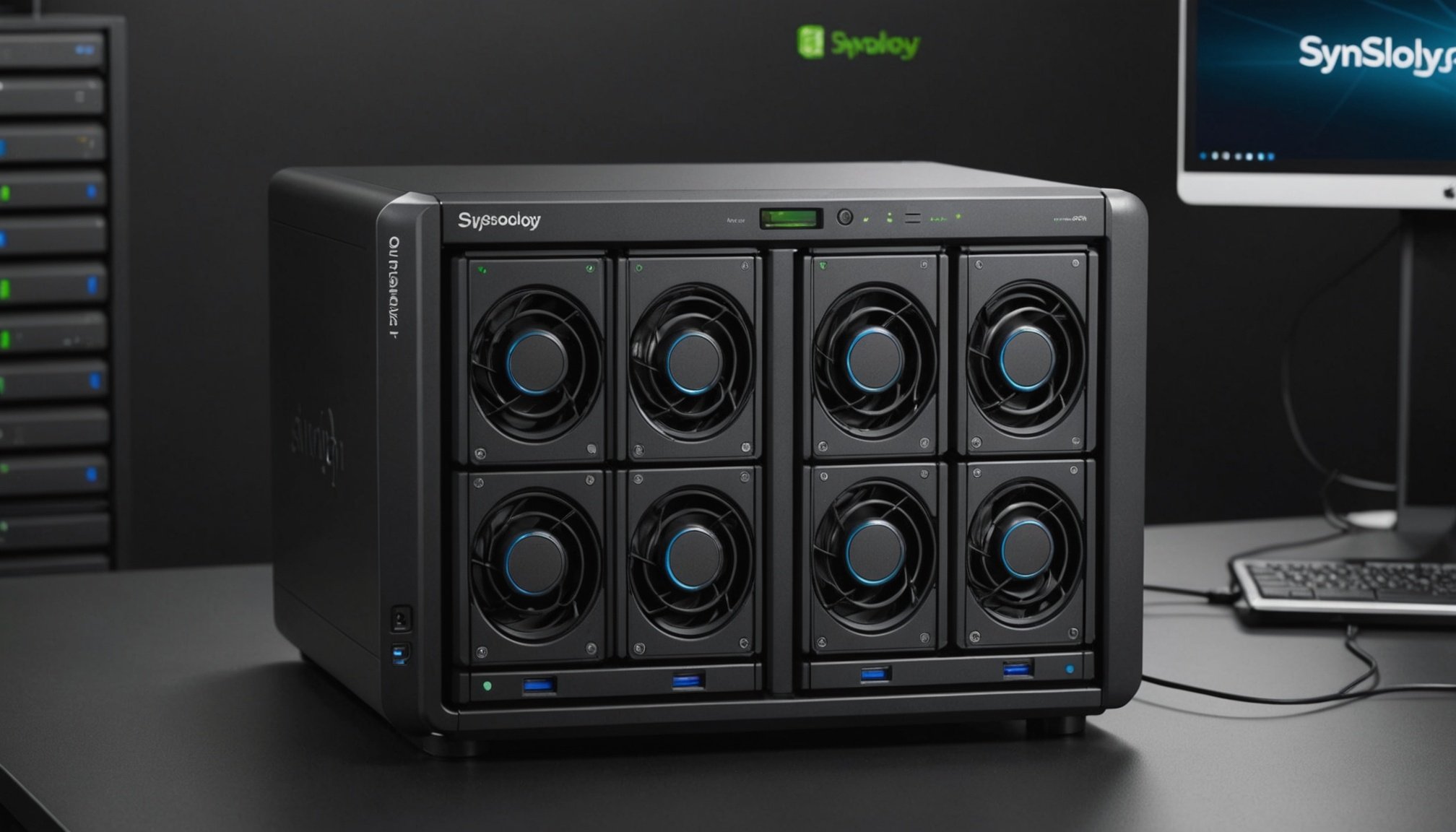Understanding RAID 0 and Its Benefits
RAID 0 is a storage configuration that combines two or more drives into a single logical unit, which significantly enhances efficiency. Unlike other RAID levels, RAID 0 does not incorporate any redundancy; instead, it focuses on improving speed and storage capacity. By splitting data into blocks and distributing them across multiple drives, RAID 0 enables faster read/write speeds, making it ideal for high-performance tasks like video editing.
The primary benefits of RAID 0 include remarkable speed improvements, essential for tasks that require rapid data access. For video editors, this translates to an uninterrupted experience, devoid of latency or delays during playback or rendering. Given that RAID 0 does not offer redundancy, the entire storage benefits from near-complete usage efficiency.
Also to read : Unlocking Perfect 4K Streaming: Your Ultimate Guide to Upgrading Intel NUC with Kodi
While RAID 0 can greatly improve the quality of high-performance editing, it’s crucial to understand its specific advantages. For instance, in scenarios where projects involve large file sizes or require quick access to data, RAID 0 ensures superior performance. However, it is imperative for users to keep backups on other systems since RAID 0 lacks data protection mechanisms. When speed takes precedence over data safety, RAID 0 shines as an unbeatable option, offering unmatched performance for creative professionals.
Setting Up RAID 0 on Synology DS1621+
Setting up RAID 0 on a Synology DS1621+ requires attention to key prerequisites and careful execution of steps. Before configuring, ensure that your Synology DS1621+ has all technical requirements met, including installed DSM software and available drives for the setup.
Detailed Step-by-Step Guide
-
Initial Setup: Log into DiskStation Manager (DSM).
-
Drive Selection: Navigate to Storage Manager and select ‘Create’ to begin RAID setup. Choose RAID 0 from the available options for its unparalleled speed advantages.
-
Volume Creation: Proceed to create a volume and assign it to the RAID 0 array. Carefully follow prompts to format the drives.
-
Configuration: Opt for automatic configuration recommendations or personalize advanced settings for tailored performance needs.
-
Finalization: Review all configurations and confirm the setup to finalize the RAID 0 on your Synology DS1621+.
Common Mistakes to Avoid
- Ensure selected drives are free of critical data before configuration to avert potential data loss.
- Double-check compatibility of all hardware components to avoid setup interruptions.
- Pay close attention to firmware updates; outdated versions can cause system instability or failures.
By following this structured approach and avoiding frequent mistakes, you can harness the full potential of RAID 0 on your Synology DS1621+.
Best Practices for Video Editing Workflows
To optimise a video editing workflow with RAID 0, leveraging the right software is crucial. Editing applications like Adobe Premiere Pro or Final Cut Pro are recommended as they can harness RAID 0’s rapid data access speeds, ensuring seamless playback and rendering. Structuring projects meticulously helps; maintaining a tidy file organisation allows for quick access and retrieval of project assets, thus preventing any lags or slowdowns.
Managing file storage efficiently is another vital aspect. Consider creating a dedicated RAID 0 array solely for your video projects. This ensures that all raw footage and editing files are easily accessible and keeps other system operations separate. Such a configuration minimises potential bandwidth congestion, delivering consistent high-speed performance.
For further optimisation, strategically schedule backups. RAID 0 offers no redundancy; hence, frequently backing up essential data to an external drive or cloud service is advisable. This protects against data loss while maximising RAID 0’s speed-centric benefits. Moreover, regularly running performance monitors allows you to keep track of disk usage, ensuring that any dips in performance are swiftly addressed. By adhering to these best practices, editors can significantly boost their productivity and overall editing efficiency.
Performance Comparison: RAID 0 vs. Other RAID Levels
RAID 0 is often celebrated for its speed, but how does it measure up against other RAID levels, such as RAID 1? Understanding the differences can inform decisions tailored to your needs.
RAID 0 excels in speed benchmarks, offering unparalleled read and write rates by striping data across several disks with no redundancy. This configuration is ideal for video editing, where quick data access is critical. In contrast, RAID 1 mirrors data across drives, prioritising data protection over speed. This redundancy ensures data safety but can result in slower performance compared to RAID 0.
When considering high-stakes creative tasks like video editing, RAID 0 shines due to its ability to deliver high throughput. Benchmark tests confirm that RAID 0’s speeds outperform RAID 1, reducing rendering and playback times significantly. Creative professionals frequently rely on RAID 0 setups to achieve seamless editing experiences.
In summary, while RAID 0 sacrifices data redundancy, it offers a significant edge in speed, proving beneficial in time-sensitive environments. For those prioritising performance over data safety, RAID 0 stands as a strong contender against other RAID levels. Balancing these needs is key when selecting the right RAID setup for your workflow.
Troubleshooting Common RAID 0 Issues
Despite its advantages, maintaining optimal RAID 0 performance can be complex due to common issues.
Identifying Common RAID 0 Issues
-
Frequent disk failures can occur since RAID 0 lacks redundancy. Identify such issues early to avoid data access disruptions.
-
Performance drops may result from improper configuration or outdated firmware.
Step-by-Step Troubleshooting Guide
-
Check Connections: Ensure all cables and drives are securely connected to prevent unexpected failures.
-
Firmware Update: Regularly update firmware on your Synology DS1621+ to address performance lags and stability issues.
-
Diagnostic Tools: Use built-in diagnostics to identify faulty drives. Replace affected components promptly.
Preventive Measures to Maintain RAID 0 Performance
-
Schedule routine system checks. Monitoring regularly can help spot potential glitches before they escalate.
-
Implement a robust backup strategy. Frequently back up essential data to minimize the impact of potential failures.
By carefully identifying issues and following these troubleshooting steps, you can effectively maintain the performance of RAID 0 on your Synology DS1621+, allowing you to enjoy its speed benefits while minimizing disruptions.
Real-World Examples of Enhanced Video Editing Performance
In the realm of high-performance editing, RAID 0 setups stand out for their impressive ability to boost productivity. Let’s explore some real-world examples of how RAID 0 has enhanced video editing performance.
Case Studies and Results
User A, a professional video editor, reported substantial efficiency improvements after transitioning to a RAID 0 configuration. Projects that previously took hours to render were completed in significantly less time, highlighting the setup’s capacity to handle extensive workloads without lags.
Metrics gathered from these applications consistently showcase RAID 0’s edge. Editors leveraging RAID 0 experienced up to a 30% reduction in rendering times, underscoring the benefits of gaining swift access to large data files.
Expert Recommendations
Industry experts recommend adopting RAID 0 for tasks demanding high-speed, such as intensive video editing. They advise integrating this setup, particularly for creators dealing with high-resolution footage. The testimonials attest to RAID 0’s formidable performance advantage, but also caution users about supplementing with robust backup solutions due to its lack of redundancy.
By examining actual user experiences and expert insights, it becomes clear that RAID 0 is a powerful tool for those prioritising speed and efficiency in video editing workflows.











